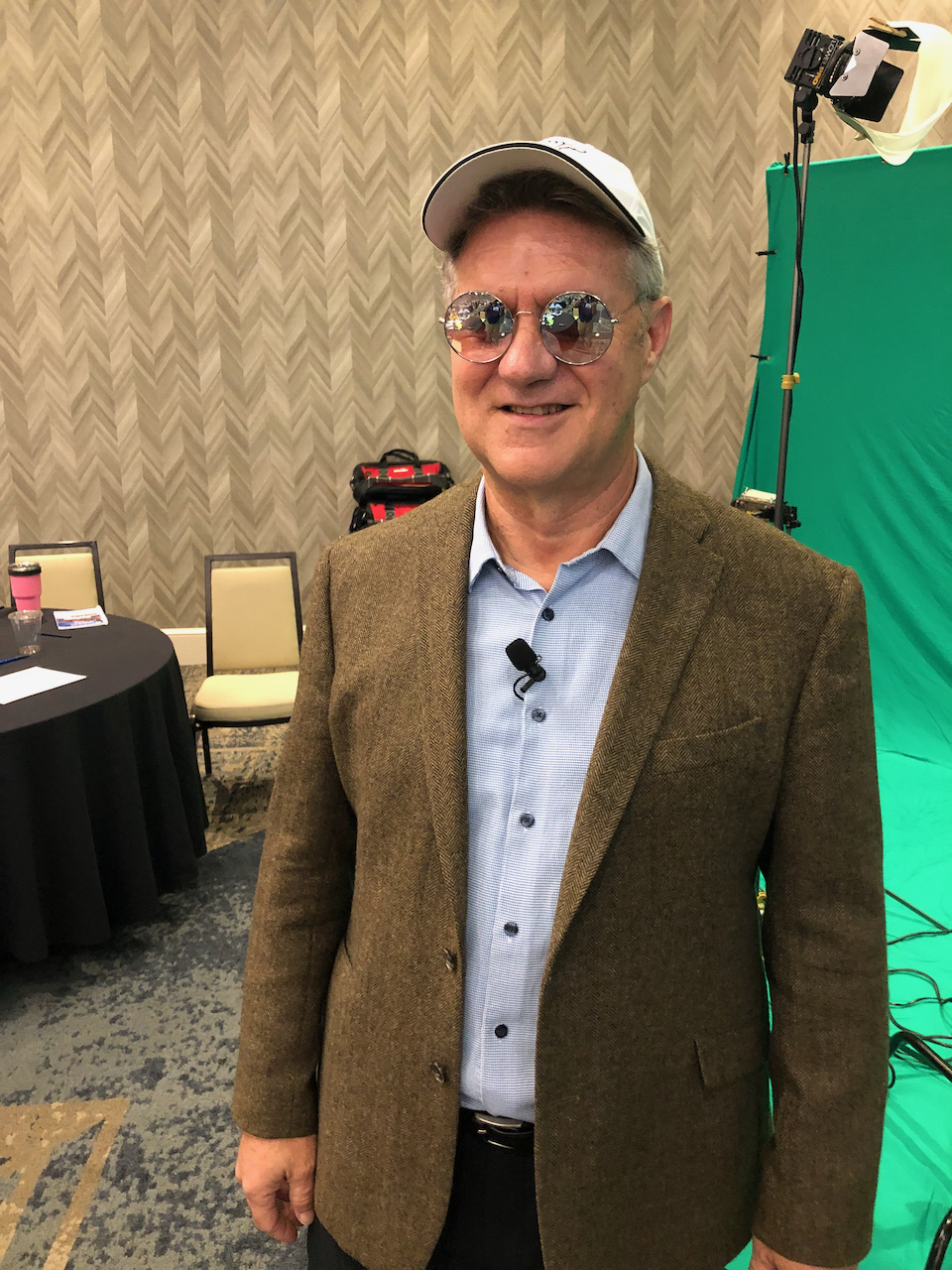Time to Get Back to Work – Part 1
by Sid Raisch

You came, you saw, you heard at the Fall Event 2019, then you went back to doing pretty much the same thing so far, didn’t you?
This is the usual process for business travel to conferences and trade shows. I bet the bag of “stuff” you got (including your notes), is sitting there in the corner just waiting for you to throw it out about September 2020, isn’t it?
What will it take to disrupt this proven-to-fail process?
It will take a new process, one that is proven effective at ending processes that do not produce positive results so we can instead apply our efforts to those that consistently create the best results.  It’s all about what Steve Bailey’s cousin ole Jim-Roy told us at Fall Event.” The same stuff has been dragging down results since the beginning of the P&L Study and has every year since.”
It’s all about what Steve Bailey’s cousin ole Jim-Roy told us at Fall Event.” The same stuff has been dragging down results since the beginning of the P&L Study and has every year since.”
There hasn’t been one year since the study began where the bottom five GMROII (Gross Margin Returned for every dollar of Inventory Investment) categories weren’t the same LOSERS they still are today. There may be one or two of you that this doesn’t apply to if proven on your individual P&L Study. Don’t just look at the numbers, also SEE what is there and RESPOND to them.
(GMROII is expressed in dollars. In most cases it takes a minimum of $2.00 return to pay for COGS, Operating Expenses, Wages & Wage Benefits. It takes more than $2.00 to also earn a profit.)
| Category | Group | Best |
| Casual Furniture | $0.77 | $0.39 |
| Outdoor Living | $1.11 | $1.18 |
| Gift | $1.39 | $1.32 |
| Christmas Non-Plant | $1.65 | $1.70 |
| Pottery | $1.64 | $2.00 |
Since Pottery is an essential ingredient in one of the Top 5 GMROII producers, I’m going to suggest that we must work harder to make this “hole selling” process at least not lose money, (as the Best Practice/High Achievers Group has done), and that doesn’t necessarily mean selling less of it (although it may for some), and it may not mean selling more of it, (although it may for some).
Conversely, there hasn’t been one single year since the study began where the Top 5 categories haven’t been the same Top 5 categories producing MANY TIMES the GMROII results than the Bottom 5.
| Category | Group | Best |
| Sod | $44.23 | $40.63 |
| Herb/Veg | $28.53 | $37.60 |
| Container Gardens | $21.59 | $26.97 |
| Fresh Greens/Trees | $22.56 | $22.19 |
| Annuals | $20.25 | $24.59 |
| Seasonal Plant | $18.46 | $19.95 |
| Perennials | $13.48 | $15.67 |
(The Top 7 were purposely listed because some clients do not have appropriate conditions to sell Fresh Greens/Trees, and Sod.)
The measured net result of this is that we have too few companies making real progress toward consistent profitability. Yes, profitability across The Group is on a steady increase (last year by a paltry .04 (that’s point four percent or .4%). The Best Practice of 10% EBITDA is the minimum expected profit of a well-run company. Anything below 10% is not achieving real growth because there isn’t enough profit to re-invest to not fall into deferred maintenance. The result is that companies are not making infrastructure investments required to keep up with replacement and improvements to offer increased perceived value.
Did you get the memo from Tim Miles that there are economic challenges on the horizon? If you’re going to join him and not participate in the next recession you might want to be figuring out how to increase your net GMROII now because if and when a recession begins it is unlikely you’ll be able to increase your profit then. How old will you be when the next recession is over?
I remember one comment out of the uneasy crowd in front of Jim-Roy, made in defense of the non-contributing pretty things, “but those things make the plants worth more to the customer.” Meanwhile, several Best Practices clients were saying that they had either completely or nearly eliminated entire LOSER categories and as a result improved their performance in their best performing categories even more. As they used to say on Hee-Haw, fact is stranger than truth.
Is this tough talk for a Monday morning? Yes, it is and yes you need to just sit there and absorb this and think it over and through. Stop the insanity. Stop it now! Stop it in your own mind first, then set a course to stop it in your company. Yes, I’m serious.
Repeating the wisdom of first eliminating the counter-productive, I have recently listened to the Craig Groeschel Leadership Podcast where he started Session 59 - Eliminate the Distractions: Cut the Slack, Part 1, saying:
What is Slack? Groeschel defines slack as “Any activity that absorbs resources and creates little or no results. Slack is the time lost between the questions and the responses. It is opportunity missed before the need is met by the supply. Slack is the extra cost between what is necessary and what is wasted. Slack is the extra steps, the unnecessary rules, the burdensome policies that are costing your organization more than you can possibly imagine.
What are some of the costs of organizational slack? Slack cripples our progress, frustrates team members (more than you imagine) depletes morale, erodes the quality of whatever we do, increases expenses, decreases profit, and robs us of our potential to have an impact.
Without so much slack, we could do more – produce more and help more people, but more of our time, money and energy is going into the slack and not into our best objectives.
Get this: Why do we have so much slack?
Slack is a natural evolution of an organization. Organizations never drift toward simplicity. They always drift into costly complexity. Nobody ever says, “we doubled in size and accidentally became more efficient”. Growth naturally creates complexity and when something becomes overly complex it kills its own growth. Peter Drucker once said, “There are only 3 things that happen naturally in any organization – friction, confusion, and underperformance. Everything else requires leadership.”
Great leaders simplify. Internalize it – because great leaders simplify. I’ll add that great leaders clarify reality, then simplify accordingly. Why? Because growth creates complexity and complexity kills growth. That’s why you are so important to the end result of your organization. By the way, what is the end result of your organization going to be if your results don’t get into the Best Practice category of profitable performance?
The Garden Center Group is administering the P&L Study and once again expecting only a little better than the same results every year because we know that’s what’s coming. While a lot of the participants are hoping for better results, as if it was magically going to happen, even though they haven’t stopped doing the things that suck their energy and keep them from investing greater efforts into making the things that have always done the best for them do any better. This is foolish. We know what needs to be done to get better results and ignoring the truth and settling for a paltry improvement and increase is below all of us. Let’s crank up the GMROII and profitability of each one of our clients!
One client sent a message to Danny Summers when he returned from Nashville. It said,
"Two things, the Fall Event was awesome, best ever!
Second, It has already paid for itself times 5!
I’ve found at least $10,000, if not more of stuff I don’t have to buy next year.
So, I’ve got $10-$20k straight to my bottom line for next year in less product and labor to take care of that product."
How’s that for ROI on The Fall Event?
My reply back to the client:
It’s actually much better than that. Yes, you'll save at least the $10-20,000. You'll gain more than that in the time, energy, effort that will come back to you to invest in your best categories pushing their GMROII and Margin Dollars even higher. So add that to your expected increase.
I hope others don’t reverse your thinking, but I know they are going to try. That can and will happen because they're afraid of losing the comfort zone of doing the same thing even if it isn't producing a net positive result to their own company.
Stay the new course. Burn the bridges - in this case the fixtures, so there's no turning back. Eliminate all remnants and leftovers and call those vendors and close your accounts and tell them to add “DO NOT SELL” behind on your name on their list so there are no reminders.
Take bold actions in the top categories where your attention will be increased. And, take the time you’ll save from going to those buying shows and instead make plans to go on vacations and learning events that will reward you and help you even more.
Start a list, then a visual dream board of the things you'll do with the money you save plus the additional money you'll earn so you and everyone else will know what you and they are working for. I can't wait to see it happen.
There are people who won’t like what I’ve just written to all of you and I’m okay with that. I’m here for you, not them, and if you’ve been working on their side of your business it’s time to switch teams and get “all-in” on building your business strength now.
In upcoming Parts 2 and 3 of “Time to Get Back to Work” we’ll look at your Profile of the Ideal for becoming Exceptionally Exceptional with your People, Products and Processes.
Until then...


